What is a Sump Pump Drain Tile System?
If you own a home with a basement and it has previously flooded, it is likely that you have been told to install a sump pump drain tile system.
What is a drain tile and how can it prevent flooding?
A drain tile is basically used to protect the home from groundwater flooding. Its purpose is to redirect water away from your home before it enters and causes damage.
Severe weather systems are occurring more frequently. Which causes surface flooding as well as rising underground water table levels.
Also, increased runoff caused by urban expansion makes it more likely that our homes will flood.
Installing a sump pump drain tile system now will save even more money later. The cost of cleaning up a flooded basement is expensive all by itself. Add to that replacing carpet, furniture, water heater and furnace. Plus, getting insurance claims processed can be a nightmare.
Table of Contents
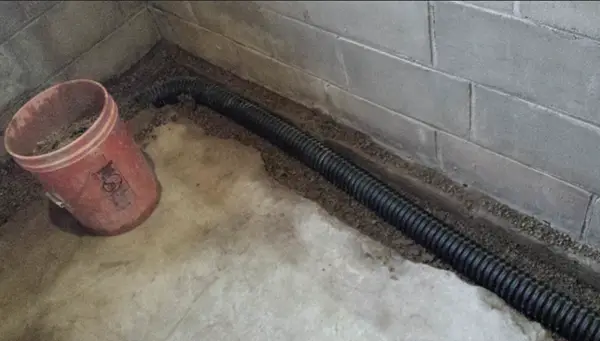
Drain Tile Operation
A sump pump drain tile is actually not a tile at all but a plastic pipe with holes or slits in it. However, that is what farmers and contractors still call it.
A drain tile is an underground drainage system laid around a building’s foundations.
As water always follows the path of least resistance, a drain tile will offer the easiest route. As a pipe used for a drain tile is porous, water will seep into the pipe system rather than into your home. The water is then led away from the home using a combination of a sump pump and gravity.
Once the water is in the pipe, it will be released above ground at a location where it can run off into a storm drain, or be directed to a dry well.
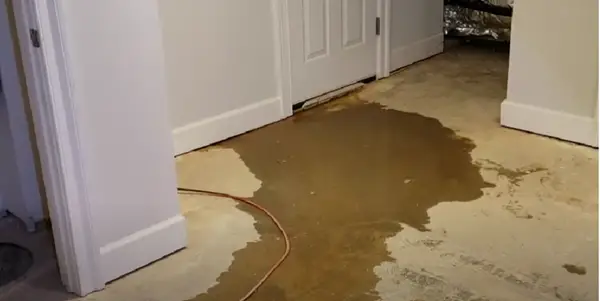
Drain Tile Origins
The use of drain tiles in agriculture dates back more than a couple thousand years. Early civilizations built channels that were lined with clay tiles to steer excess water away from their crops. This yielded better harvests and improved crop growth.
However, this type of drainage system was only introduced to America in 1838. John Johnson, a Scottish immigrant, first used the drain tile method on his farm in New York.
His results were incredible. His crop production drew considerable attention as it surpassed that of all neighboring properties.
Henry French, a fellow agriculturalist, was very interested in this concept. Although Johnson was the first to use a drain tile, French took the concept further and brought it to the masses. Henry French’s book “Farm Drainage: The Principles, Processes, and Effects” was released in 1859.
Back then solid fired clay pipe sections were used. Each section of pipe was separated by 1/8 inch. Which is how the water got into the drain system. Today we have plastic pipe with round holes or slits in them.
After the book’s release, the use of drain tiles increased to such an extent that the system became known as the French Drain. The term is still commonly used to this day in agriculture.
The term drain tile is commonly used outside of agriculture. Various other terms are also used for the same thing. Including perforated drain, perimeter drain, rubble drain, foundation drain, footing tile, and weeping tile.
Use of Drain Tiles in the Construction Industry
Drain tiles are used in residential and commercial construction. The purpose of drain tile is to prevent groundwater from damaging a building. Drain tiles gather the water around the building and removes it.
There are two types of drain tile systems – external and internal.
External drain tile systems are when drain tile pipes are installed around a building’s perimeter below the floor slab’s level. Nowadays, this is the preferred technique for all new buildings, either without or with internal drain tiles.
It should be noted that it’s possible to retrofit external drain tiles.
Internal drain tile systems are when drain tile pipes are installed inside a building’s foundation under the floor slab. This option is more common when retro-fitting drain tile. It is also used in new buildings together with an external drain tile.
Many recently constructed properties already have drain tile installed. Nationwide building codes now specify that a drain tile has to be installed for all homes with basements or crawl spaces. The only exception is for homes being built on soil that drains well naturally, like sand or gravel.
Although soil that drains well decreases the risk of water damage, it doesn’t prevent it. It is still a good idea to install a drain tile system. The initial installation cost is outweighed by the benefits.
Also, selling a house without drain tile can be quite difficult. Buyers may want a substantial price decrease to pay for a future system installation.
Drain Tile Pipe Types
There are two main types of pipes used for drain tile, which are round in shape. Additionally, some waterproofing companies have their own proprietary systems that use square or rectangular pipes.
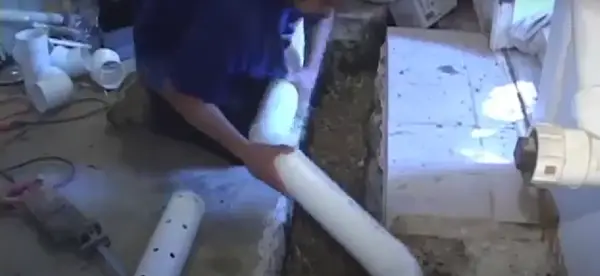
The first type is rigid PVC pipe. Although it looks like a normal drain pipe, there are small holes in one side of the pipe that allows water to enter. When the pipe is laid, the holes face down so that rising water can enter the pipe.
Corner fittings are used to change the direction of the pipe. This type of pipe is supplied in 10-feet lengths and costs about $19.00 per length.
The second type is a corrugated flexible pipe. The small slits on all sides of the pipe allow water to enter from all directions. However, the slits are small enough to prevent dirt and sand from entering.
A common recommendation is that a fabric sleeve is used together with the pipe to protect the pipe from possible blockages. That fabric may become clogged with earth and slow down the passage of water into the tile.
- Flexible, lightweight and affordable drainage solution
- Strong construction helps withstand weather and human elements
- Pipe is perforated to allow water to enter and be transported away
Which is why drain tile must be placed in a bed of washed gravel. That washed gravel must be covered with a landscape fabric. That will prevent soil from washing into the gravel and eventually into the drain tile.
This type of pipe costs about $1.60/foot without the fabric sleeve and $2.00/foot with the sleeve. It’s less expensive than the rigid pipe and because it’s flexible, you won’t need corner fittings.
The polyvinyl composition of the pipe means it is super durable in both high and cold temperatures. It will also not crack like a PVC pipe will when a 2500+ pound car drives over it.
Both types of pipe normally have a diameter of 4 inches. Although this is the industry standard for drainage in residential areas, bigger diameters are available up to 18 inches maximum.
Laying an Exterior Drain Tile
Although drain tiles, both externally and internally can be retro-fitted for older homes, it’s best to install them during home construction.
The ideal scenario is to lay drain tile together with the foundations of a new home. This will provide maximum system design flexibility while keeping the cost as low as possible.
A deep trench is dug next to the footings on the house’s exterior when the building’s foundation is close to completion. The pipe is placed in the trench and covered with washed gravel. The gravel must be at least 1/2 to 3/4 inch big to prevent blockages that will result in the drain tile becoming ineffective.
The gravel is covered with porous landscape fabric. This will allow water to seep through while preventing soil from clogging up the pipe or the drainage channel. The fabric is then covered in soil which is filled to ground level.
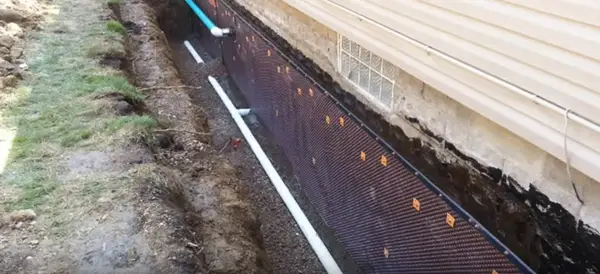
Retro-fitting Interior or Exterior Drain Tiles
It is possible to retrofit exterior drain tile even though it is easier to install during construction. Although the process is costly and disruptive, it will often resolve an ongoing water problem.
This process involves using a backhoe excavator to dig a trench down to the house footings around the outside of the building. The process causes considerable disruption and is labor-intensive.
It may be necessary to remove sidewalks, concrete steps, trees, shrubs, and decking.
External installation takes considerable money and time and risks structural damage. This is seen as a short-term rather than a long-term solution. Contractors will generally at most offer a guarantee for 10 years or less. The alternative is to do an internal installation.
Internal Sump Pump Drain Tile Installation
Although this process will cause internal disruption, it is most commonly used to retrofit a system.
The basement area has to be as empty as possible before installation. In basements that have been finished, this includes removing any fixed cabinets, as well as sheetrock along the bottom part of the walls, and floor covering. Much less prep work is required for unfinished basements.
All loose items are then moved to the center of the room. Everything is covered with plastic sheets, including smoke detectors and light fixtures.
A sump-pit and perimeter trench is now jackhammered out of the concrete foundation slab. Although this process is noisy and time-consuming, it is much quicker than doing exterior excavation.
The pipe that will lead any groundwater into the sump pit is then placed in the trench. A sump pump is used to move the water to the outside via a discharge pipe.
The interior sump pump drain tile system is very effective for older homes that don’t have foundation drainage.
Drainage Water Destination
As mentioned previously, a drain tile system is meant to prevent excess water from reaching a building. How and where the water is channeled depends on the geographic location.
The sump pump drain tile system first collects the water in a sump pit in the basement and then pumps it away from your property with an electric-powered sump pump.
For properties that have a significant slope, gravity is the perfect method to drain water. However, this method will only work with a slope of at least 1/4 inch per foot, as anything less will not be effective. The gravity drainage method is a very effective and inexpensive way to remove excess water.
If the property’s yard gradient is not sufficient, an outdoor French drain or buried pipe will be needed.
The end destination may be a dry well or storm drain. Dry wells should be placed at a significant distance away from the building to prevent water from seeping back into the basement.
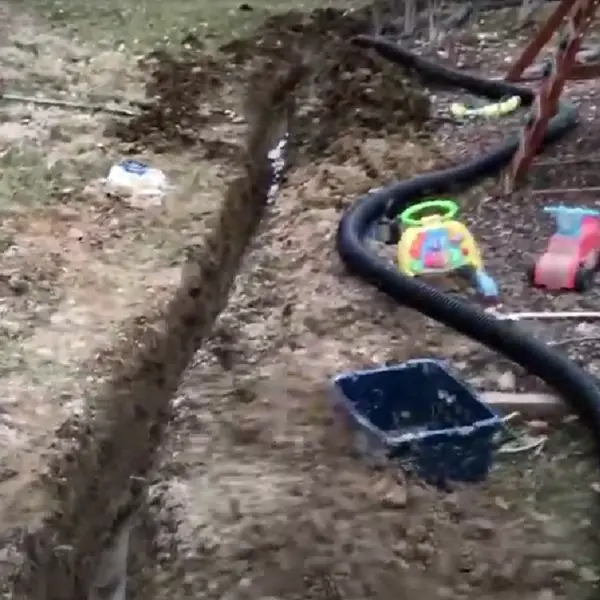
Drainage Problems When Using Exterior Drain Tiles
Water problems can still occur despite having drain tile installed around the home’s exterior. Any type of drainage pipe, including drain tiles, are susceptible to blockages.
This may be caused by debris and dirt or tree roots entering the pipe. Other causes include a sump pump malfunction or cracked pipes allowing water to flow back to the home.
Possible signs of a moisture issue include:
- Water pools in the basement.
- Water stains on basement walls.
- Salt-like residue on basement walls.
- Mold.
- Water puddles around the basement floor perimeter.
If you find any of these issues and are not able to determine the cause, it’s best to contact a professional to investigate. Although determining the source of the problem can be time-consuming and difficult, the longer you leave it the bigger the problem is likely to become.
Cost of Drain Tile Installations
As many factors affect the overall cost of drain tile installation, they can vary considerably. These factors include DIY or professional installation, retro-fit or new build, external or internal installation, flexible or rigid pipe, etc.
Hiring a professional is the most expensive option. Although it will cost more, you will be paying for experience and expertise. A professional installer will do the job faster and you’ll be less likely to experience problems in the future.
When installing an outdoor drain tile during the new home construction, you will probably have to pay between $45 and $80 per lineal foot. The bigger the drain diameter, the higher the cost will be.
For budgeting purposes, a good average to work with is $65 per foot. Although this is at the higher end of the scale, it should be a realistic figure for you to be comfortable with. This means a budget of $9750 is needed for 150 feet of drain tile.
To retrofit an exterior drain tile system for older homes, the cost will increase to a very rough starting price of $40,000.
Doing it yourself will likely take longer but you can do the work in sections. As you will save considerably on labor costs, DIY is always a cheaper option, but there will still be equipment hire and material costs.
Hiring a trencher runs at about $300 per day plus a trailer charge, while hiring a compacter will cost around $150 per day.
The costs for retrofitting internal drain tiles are more reasonable. You will have to budget for about $8,000-$16,000 when using a sump pump to the outdoors. Although you may have additional expenses to direct the water away from the house.
Also, project complexity, basement size, and access will all affect the installation cost.
Hidden Costs of Sump Pump Drain Tile Systems
Internal basement drainage systems pump the water outside of the house. However, that water must flow far enough away from the house to prevent it from flowing back into the basement.
So, the earth might need to be sloped at a steeper angle from the house to the street or back yard. If that isn’t an option, consider an underground pipe that empties at a lower elevation.
Don’t have a good place for the water to drain to? The next option is to run the water into a dry well.
Dry wells come in several configurations and are made from a variety of materials. The type and size of the dry well you need will be determined by the volume of water it needs to handle.
If you use a professional to install the dry well, it may cost up to $3500. The cost for materials and self-installation is around $500.
With the drywell system shown below you can connect as many 50 gallon dry wells together as needed.
- COLLECT, DETAIN, AND INFILTRATE EXCESS WATER: Puts excess water back into the ground; the Flo-Well Dry Well is ideal for residential and commercial locations such as yards, playgrounds, golf courses, wash-down areas, rain gardens and bioswales
- HOW TO INSTALL: Connect to 4 in. Sewer and Drain (S&D) Pipe through top cover knockout; 12 side-panel knockout points connect to 4 in. S&D and Sch. 40 Pipes; Can be buried or stacked up to 8 ft. deep and supports pedestrian traffic including lawn tractors
- GRAVEL-FREE ALTERNATIVE: Unlike a traditional dry well that requires filling an large hole with heavy stone and gravel, the Flo-Well Dry Well only needs a small amount of gravel at the base to prevent scouring and provides 250% more detention volume
- USE ONE OR MANY: The Flo-Well Dry Well works as a stand alone product and can be used in multiples; units can be stacked up to 4 high or side-by-side 18 in. apart
- INCLUDES: 3 side panels and top cover, unassembled; open bottom allows water to seep into gravel and ground below; bottom panel sold separately to provide a base for a sump pump if desired
Properly planned external drainage systems should not have much in the way of hidden expenses. Although you might hit solid rock formations or have to work around buried pipes. Or avoid digging too close to trees so as not to harm tree roots.
How Much Does It Cost to Install a Sump Pump? Truthfully?
Zoeller M84 Pedestal Sump Pump Review: Stay Dry and Safe
Zoeller M53 Sump Pump Review: 1/3 HP Cast Iron Mighty Mate
Superior Pump 91250 1/4 HP Utility Pump Review: 22 Best Uses
Last update on 2025-07-08 / Affiliate links / Images from Amazon Product Advertising API

